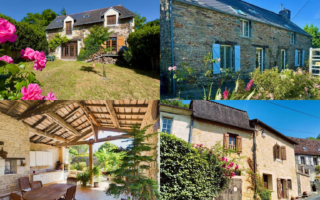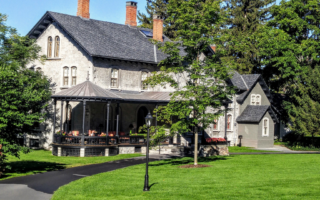How to buy an apartment in France – and why you won’t pay fees to a freeholder

In France, apartment owners don’t pay ground rent or maintenance charges to a freeholder, as Matthew Cameron explains
When you buy an apartment in England or Wales, your purchase will generally be of a long lease. As leaseholder, you are granted the sole right to use the apartment, but the actual ownership of the building remains in the separate ownership of a freeholder. That freeholder will charge an annual ‘ground rent’ and will require an ongoing contribution to charges and expenditure applicable to the building.
COMMONHOLD
Long leases like this do not exist in France. Rather, each apartment is owned absolutely by the buyer, who also buys a proportion of the communal areas, such as hallways, stairwells and gardens, which are held in common with all other owners in the building. This concept of ownership does actually exist in English law, although it is relatively rare; it is known as ‘commonhold’ ownership. The French term is copropriété.
Apartment blocks are the most common developments held in the copropriété format. Others include holiday villages, such as those on coastal resorts, golf complexes and châteaux estates.
Under this notion of commonhold, every owner is required to contribute proportionally to the ongoing maintenance of the building. They decide on how to spend the money at an AGM where each owner’s voting rights is directly proportionate to the size of their apartment and consequent share of common areas. Usually, they will also jointly choose a property agent (le syndic) to oversee the management on a day-to-day basis.

THE RULEBOOK
Before buying a French apartment, it is important to know exactly what you will privately own, what you will hold in common with others, what your owner’s rights and obligations will be, and how any costs for managing the property will be shared.
In England and Wales, these arrangements are set out in the lease itself. In France, they appear in the commonhold rulebook, known as the réglement de copropriété or, more specifically, the reglement de copropriété – état descriptif de division.
The rulebook sets out the detail of every single apartment, every ski locker, parking place, storage room and so on. Each one is attributed a lot number, which must appear in the buyer’s purchase contract and title deed.
To each lot number there will be attributed a fraction of total ownership – often expressed in thousandths, known as ‘millièmes’. The larger the apartment, the greater the number of millièmes allocated. Where the buyer also purchases other areas, such as a parking space or cellar, similar fractions can be attributed to these areas.
It is the number of millièmes owners have that determines their level of voting rights and the contribution they will pay towards the property’s upkeep and security.
COMMON AREAS
The réglement de copropriéte also sets out the exact definition of what constitutes the common areas of a building (held jointly by all owners), and what is owned privately by each owner. You
might think this would be straightforward: the structure of the building, hallways, gardens and drives would be commonly owned; the apartments would be private.
However, it’s not that simple. There are structural and dividing walls to consider, cables and pipes that may be used for common benefit or by one apartment only. If an apartment comes with a garden or a roof terrace, that will be described as being part of the common ownership, even if nobody can use it apart from the owner and guests. The document drills down into the detail so that everyone understands exactly where they stand.
RIGHTS AND OBLIGATIONS
The rights and obligations of each owner are set out in the second section of the réglement de copropriété. This determines how they may use their property and the facilities, and how they must deport themselves overall.
Much will be common sense, but buyers should check the conditions before signing a contract. They may find there are rules on noise levels, their ability to rent out the apartment or the right to bring in pets that could make all the difference.

AGM AND SYNDIC
The third and final part of the document establishes the constitution of the co-ownership committee, including the procedure for general meetings.
At the AGM, the previous year’s budget is signed off and the following year’s is agreed. Owners discuss any proposals for works, whether in common or individual areas, and any problems raised.
It is at the AGM that the syndic is chosen for the following year. Often a local property agent, this person carries out the day-to-day running of the building in accordance with the committee’s wishes and budget. Often, they have a cost threshold up to which they are allowed to enter into contracts without prior approval of the commonholders.
A STAKE IN THE FUTURE
This may all sound rather complex. On the other hand, some people like the reassurance that all the owners have a mutual interest and stake in keeping the property well maintained and secure and that it will remain so even if they are not there.
An owner’s voting rights may actually be relatively small. However, it is prudent to take part in the administrative procedures, even if they are not enthralling. It is also wise to review all of the co-ownership information in advance of an apartment purchase.
Records are kept so it should be possible to understand the typical previous expenditure for the building and how well it has been kept.
Inevitably, the paperwork will make for heavy reading – especially if no English translations are available – but a specialist solicitor will be able to assist.
Find an apartment at FrancePropertyShop.com
Share to: Facebook Twitter LinkedIn Email


